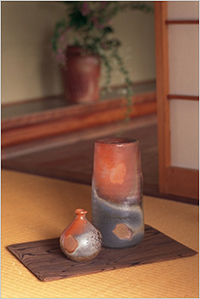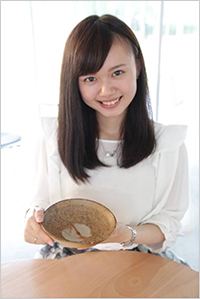Enlarge Image Miss Bizen Yaki holding an example of actual Bizen pottery
Enlarge Image
 Okayama Travelogue
Okayama Travelogue
The lure of Bizen Yaki
Japan’s Bizen pottery or ‘Bizen yaki’ has a distinctive rugged texture and reddish hue. The clay is extracted from kilns following the characteristic long, pine wood fueled firing that last around two weeks or so. Intriguingly, Bizen ware is produced without glazing with ceramic paints that are widely used for many other kinds of pottery.
The clay for Bizen pottery is dug from rice fields and has high iron content and the final look and feel of Bizen ware depends on the choice materials that master potters use to wrap around the clay objects during firing.
Bizen ware has its roots in Okayama Prefecture, and specifically in the village of Imbe more than a thousand years ago during the Heian era. The other famous kilns (cities) in Japan renowned for producing ceramics are Echizen, Seto, Shigaraki, Tokoname, and Tanba.
The four main types of Bizen are known as Goma, Hidasuki, Sangiri, and Yohen. The colors and appearance of each of these types depends on the wrapping used during firing, where for example, Hidasuki have distinctive red marks of the strands of straw used for wrapping.
Bizen City is a popular destination for tourists with many sights and sounds, including the kilns that date back a millennium.
Bizen City, Okayama website:
http://www.city.bizen.okayama.jp/english/bizen/miryoku.html
Okayama Prefecture Museum of Art:
http://www.pref.okayama.jp/seikatsu/kenbi/index-e.html


